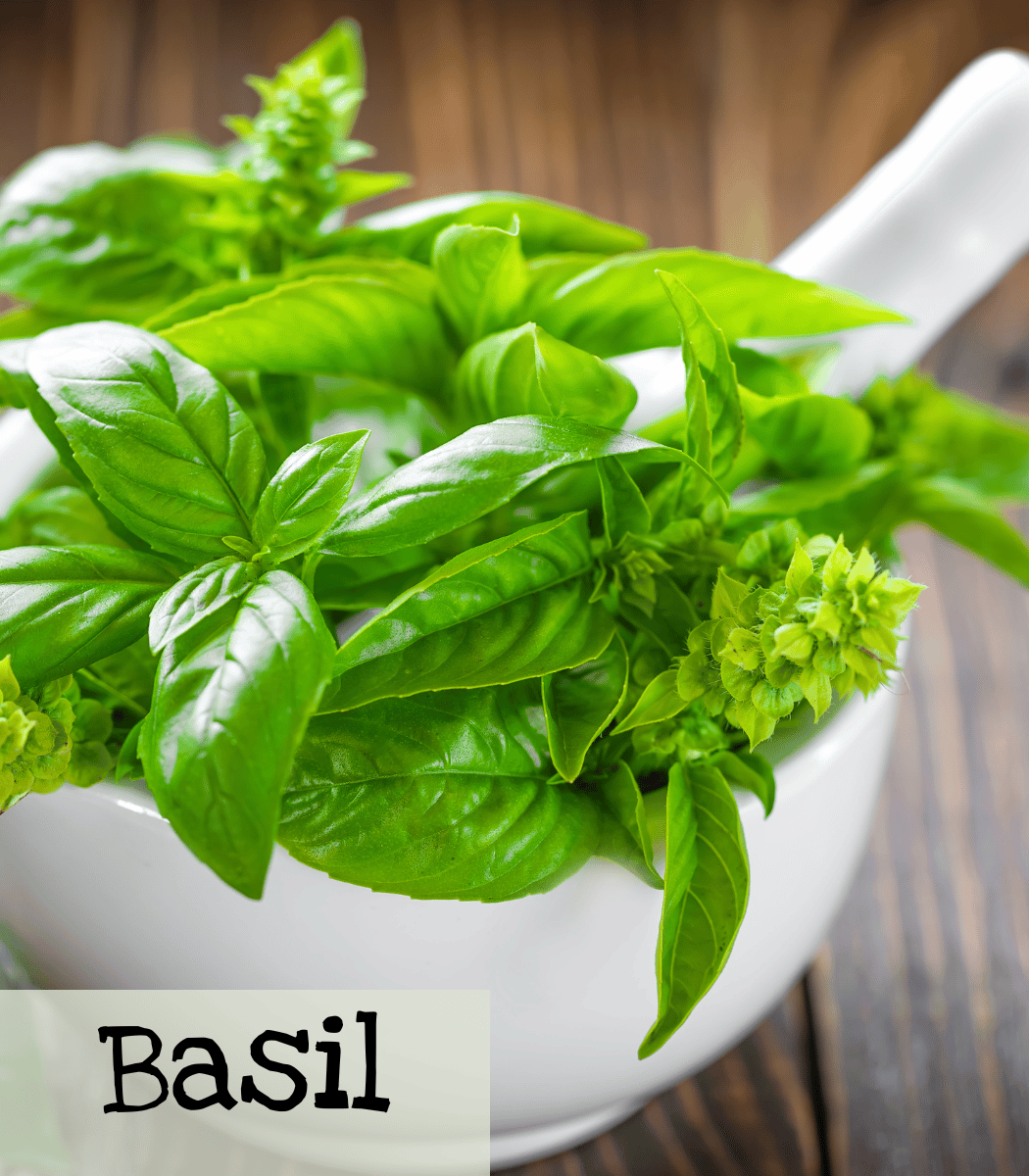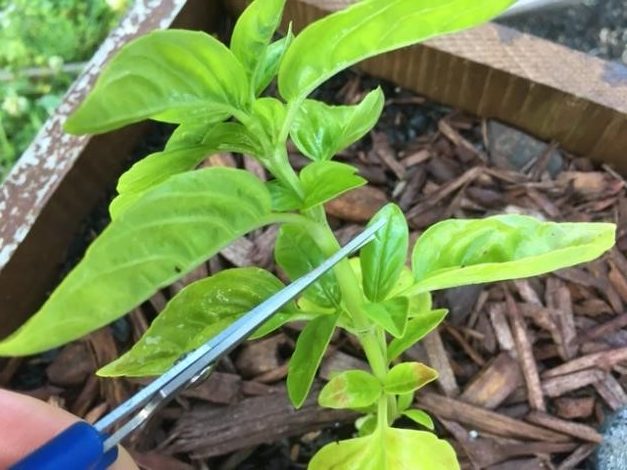
Basil
A member of the mint family, basil is often used in Italian cuisines. Pestos, sauces, and pizzas are only some of the Italian favorites basil is perfect for. Some basil varieties are good for Asian cuisine and desserts. It is very easy to grow.
|
Genovese; Lettuce Leaf; Pesto Party; Sweet Italian |
|
Ocimum basilicum |
|
Easy |
|
Easy |
|
5 years if properly stored |
|
Annual |
|
7-10 days |
|
12-24 inches Lettuce leaf: 18-24” |
|
6-8 hours |
|
50-75 days |
|
March, April, May |
|
Out of Stock: Lettuce Leaf, Pesto Party; Sweet Italian Yes for the rest |

Growing Tips


When to Start
Spring: Start indoors 4-6 weeks before the last frost date.
Transplant: After all danger of frost has passed.
Direct Sow: After all danger of frost has passed.
How to Start
Start indoors 4-6 weeks before the last frost. Sow into seed cells to a depth of 1/4 inch and place under grow lights. Transplant after hardening off and all danger of frost has passed. Basil doesn’t tolerate any frost. Or direct sow by scattering the seeds in a full sun location once the soil temp has reached 55° F and lightly cover with dirt. Water thoroughly. Thin to 6 inches apart once the seedling comes up.
Care
Basil doesn’t like chlorinated water. To remove the chlorine, fill your watering cans and leave them for 24-48 hours. The chlorine, which is a gas, will dissipate into the air. To prolong harvest, pinch off any flowers that start to form. Slugs can be a problem. If you notice black lines or black areas on your leaves, it’s probably a slug. Use eggshells to control slugs.
Harvest
Harvest throughout the growing season. Cut above-branching leaves to create more branching. This will allow the basil to produce more leaves for harvest. The leaves will be at the peak of flavor when harvested in the morning. Basil will start to flower and when it does its life cycle will be almost over. To prolong the harvest, cut or pinch off the tower of leaves/buds that form on the tops of the plant until you are ready for it to go to seed.
How to use
Basil is used in Italian cuisine. It can be turned into pesto, used in spaghetti sauce, and added fresh to pasta. Try adding it to salads or sandwiches like roast beef! Basil is also a natural anti-inflammatory and traditionally was used to help reduce arthritis pain. Check with your doctor before using basil medically. Ingesting too much is a bad thing as it can cause irregular heart beats and might interact with certain medications.
Basil Tea has a very mild, refreshing flavor. Use 5-6 basil leaves per 8 oz cup of black tea. Mush leaves. Poor boiling water over leaves and tea bag. Let steep then strain out the leaves. Enjoy plain, or with a splash of milk, or sugar to taste.
Pro Tip!
Incompatibles: Cucumber, beans, cabbage
Grows well with: Peppers and tomatoes
My personal experience
Basil is an herb I grow every year. I start it indoors and transplant it into pots on my patio. I’ve grown several varieites including purple and cinnamon. But my favorite is the sweet Italian.
It is so good in italian dishes and pesto and it’s easy to dry. Plus, I do love a good cup of basil tea. The seeds are very easy to save. Every sweet Italian plant I’ve grown is from seed I’ve saved!

Seed Saving

Isolation Distance
Basil relies on insects for pollination but can be reliably isolated by as little as 150 feet since most of the pollinating insects are small and don’t travel far. Different basil varieties will cross each other.
Instructions
Harvest seed heads as they dry and allow them to finish drying in a warm, dry spot. Seeds are easily removed by crumbling the dried flower heads and then blowing away the chaff. You can practice over a plastic sheet at first until you get the hang of it.
Plants cut back after harvest will grow another set of leaves for harvest—and even produce seeds again—if your season is long and hot. A branch or two of each plant can easily be left to go to seed while collecting leaves for cooking with from the rest of the plant.
For drying leaves. Cut leaves and tie them in small bundles. Hang upside down and fully dry. Drying can take a few weeks. Store in clean herb jars.
Features
- Basil is a natural anti-inflammatory and can help reduce and/or eliminate arthritis pain. Check with your doctor before using.
- Genovese: Italian heirloom. It has extremely tender, fragrant, extra-large, dark green leaves. Traditionally the basil variety used in pesto.
- Lettuce Leaf: Huge 6-inch leaves that are mild and more subtle than Genovese. It is great for making pesto and adding salads. Very productive.
- Mammoth: Italian heirloom. Produces extra large, ruffled leaves that are good in salads and pesto.
- Pesto Party: This is a well-branching plant that produces continuing leaves that are like sweet Italian. It is late bolting.
- Sweet Italian: Italian heirloom. Large leaves are perfect for pestos, tomato sauces, pizza, and fresh.

Do not plant sage next to basil–they do not get along. One or both will die.
Chlorine will slowly kill basil. Allow water to sit for 24 hours to remove chlorine from it.
Add fresh basil to salads for an unexpectedly pleasant flavor. (If used to help arthritis pain, I’ve been told that 3 leaves eaten whole is more effective than 2 cups of basil tea.)
You May Also Like:
Sources:
Stuart Milligan Research Chemist
The New York Botanical Garden, Herbal Handbook, Clarkson Potter.
